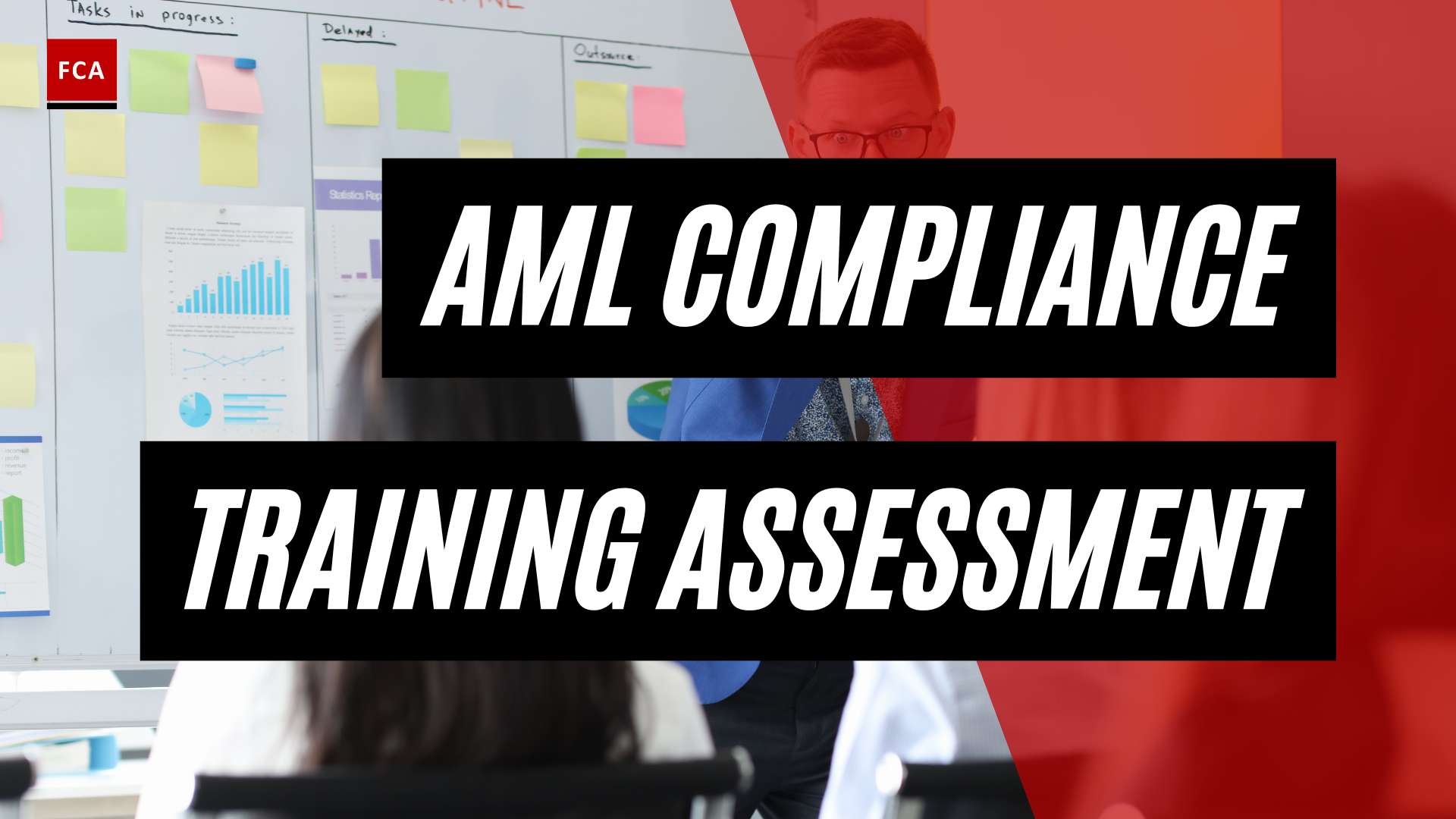Understanding Digital Payment Transaction Monitoring
Digital payment transaction monitoring plays a crucial role in ensuring transparency and security in the rapidly evolving landscape of AML in mobile and digital payments. By continuously assessing and evaluating transactions, financial institutions can identify anomalous behavior and detect suspicious activities in real-time, helping to prevent fraud and protect both businesses and consumers.
Importance of Digital Payment Transaction Monitoring
As digital payment methods continue to gain popularity, the need for effective transaction monitoring becomes increasingly important. Monitoring digital transactions allows financial institutions to identify and respond to potential risks promptly, enhancing security and reducing the impact of fraudulent activities on their operations (sdk.finance).
Fraudulent activities in digital payments, such as account takeovers, identity theft, and cybercrime, pose significant threats to financial systems. Through comprehensive transaction monitoring, these risks can be mitigated, safeguarding the integrity of the financial ecosystem (sdk.finance).
Benefits of Real-Time Monitoring
Real-time monitoring of digital payment transactions provides several benefits for financial institutions and payment service providers. By analyzing transactional data in real-time, potential risks and fraudulent activities can be swiftly detected and addressed. This proactive approach allows for timely intervention and response, reducing the impact of fraudulent transactions and enhancing security measures (sdk.finance).
Real-time monitoring also helps to minimize false positives, reducing the number of legitimate transactions that are mistakenly flagged as suspicious. By leveraging advanced analytics and machine learning algorithms, financial institutions can accurately identify suspicious patterns and behaviors, improving the efficiency of their security operations (sdk.finance).
Furthermore, real-time monitoring enables financial institutions to comply with regulatory requirements governing digital payments. By promptly detecting and reporting suspicious activities, institutions can demonstrate their commitment to combating money laundering, fraud, and other financial crimes (sdk.finance).
In summary, digital payment transaction monitoring is of utmost importance in today’s digital landscape. It enables financial institutions to detect and prevent fraudulent activities, comply with regulatory requirements, and enhance the overall security of digital payment systems. Real-time monitoring further enhances these benefits by enabling swift intervention and reducing false positives. By adopting robust transaction monitoring solutions, financial institutions can ensure the integrity and transparency of digital payment transactions.
Key Components of Digital Payment Transaction Monitoring
To ensure the integrity and security of digital payment transactions, it is important to have robust monitoring systems in place. These systems incorporate advanced analytics and machine learning capabilities, along with effective data management and security measures.
Advanced Analytics and Machine Learning
Digital payment transaction monitoring solutions leverage advanced analytics and machine learning algorithms to analyze vast amounts of transactional data in real-time. This enables swift and accurate detection of suspicious activities while minimizing false positives, thus streamlining security operations. By continuously learning from patterns and anomalies in transaction data, these systems can adapt and improve their detection capabilities over time (sdk.finance).
The use of artificial intelligence and machine learning algorithms allows financial institutions and payment providers to identify complex patterns and anomalies that may indicate fraudulent or illicit activities. By analyzing various factors such as transaction amounts, frequency, and geographic locations, these systems can identify potential risks and flag suspicious transactions for further investigation. This proactive approach helps in preventing financial crimes and mitigating risks in the digital payment ecosystem.
Data Management and Security
Effective data management and security play a crucial role in digital payment transaction monitoring. With the increasing volume and complexity of transaction data, it is essential to have robust systems in place to handle, store, and protect this information.
Data management involves collecting, processing, and organizing transactional data in a structured manner. It ensures that the data is accessible for analysis and monitoring purposes. Additionally, data management practices encompass data cleansing, normalization, and integration to ensure accurate and reliable insights.
Security measures are vital to protect the integrity and confidentiality of transactional data. This includes implementing encryption protocols to safeguard sensitive information and access controls to ensure that only authorized personnel have access to the data. Regular security audits and assessments help identify vulnerabilities and ensure compliance with industry regulations.
By adopting comprehensive data management and security practices, financial institutions and payment providers can not only protect sensitive customer information but also ensure the accuracy and reliability of their digital payment transaction monitoring systems. This further enhances their ability to detect and prevent financial crimes.
As the digital payment landscape continues to evolve, it is crucial for organizations to stay updated with the latest advancements in analytics, machine learning, data management, and security. By investing in these key components, they can strengthen their digital payment transaction monitoring capabilities and contribute to a more secure and resilient financial ecosystem.
Enhancing Security in Digital Payment Transactions
As digital payment transactions continue to gain popularity, it becomes increasingly important to prioritize security measures to protect against fraud and ensure compliance with regulatory requirements. Two key aspects of enhancing security in digital payment transactions are fraud detection and prevention, as well as compliance with regulatory requirements.
Fraud Detection and Prevention
One of the primary concerns in digital payment transactions is fraud. However, with effective digital payment transaction monitoring systems in place, businesses can identify and block potential fraudulent transactions in real-time, providing improved security for both businesses and consumers (Forbes). These systems utilize advanced analytics and machine learning algorithms to analyze vast amounts of payment data, enabling the prompt identification of suspicious activities and the mitigation of potential risks (Cube Global).
To effectively detect and prevent fraud, financial institutions and businesses implement various security measures. These measures may include:
- Authentication Mechanisms: Implementing multi-factor authentication methods adds an extra layer of security by requiring users to provide multiple forms of identification before completing a digital payment transaction. This helps to verify the legitimacy of the transaction and reduce the risk of unauthorized access (Comerica Insights).
- Advanced Technologies: Utilizing artificial intelligence and machine learning algorithms, financial institutions can analyze patterns and anomalies in payment data to identify potential fraudulent activities. These technologies can quickly adapt to new fraud patterns, enhancing detection capabilities.
- Real-Time Monitoring: Implementing real-time monitoring tools allows businesses to actively monitor transactions as they occur, enabling the prompt identification and prevention of fraudulent activities. Real-time alerts and notifications enable immediate action to be taken when suspicious transactions are detected (Forbes).
Compliance with Regulatory Requirements
Compliance with regulatory requirements is another crucial aspect of enhancing security in digital payment transactions. Financial institutions and businesses operating in the digital payment industry must adhere to various regulatory guidelines, such as the EU’s Anti-Money Laundering Directive (AMLD) and the U.S. Bank Secrecy Act (BSA), to ensure robust digital payment transaction monitoring systems that detect and prevent illicit activities effectively (Cube Global).
Regulatory frameworks aim to prevent financial crimes, such as money laundering and terrorist financing, by enhancing transparency and monitoring of digital payment transactions. Financial regulators and authorities play a crucial role in establishing and enforcing these regulatory requirements to mitigate the risks associated with digital payment transactions.
To ensure compliance with regulatory requirements, financial institutions and businesses should:
- Stay Updated: Stay informed about the latest regulatory changes and requirements to ensure that digital payment transaction monitoring systems remain in line with evolving regulations (Cube Global).
- Data Security: Implement robust data management and security measures to protect customer data and ensure compliance with data protection regulations. This may include encryption techniques, secure data storage, and access controls (Cube Global).
- Transaction Monitoring: Implement enhanced transaction monitoring practices that utilize advanced technologies, such as artificial intelligence and machine learning algorithms, to analyze payment data in real-time. This helps to identify suspicious activities promptly and comply with regulatory requirements.
By prioritizing fraud detection and prevention measures and ensuring compliance with regulatory requirements, businesses can enhance the security of digital payment transactions. These efforts not only protect businesses and consumers from financial loss but also contribute to building trust and confidence in the digital payment ecosystem.
Selecting a Reliable Digital Payment Transaction Monitoring Provider
When it comes to digital payment transaction monitoring, selecting a reliable provider is crucial to ensure the security and integrity of financial transactions. A trusted provider should offer robust solutions that effectively detect and prevent fraudulent activities in real-time. Consider the following factors when choosing a digital payment transaction monitoring provider.
Considerations for Choosing a Provider
-
Advanced Analytics and Machine Learning: Look for a provider that leverages advanced analytics and machine learning algorithms to analyze vast amounts of payment data in real-time. These technologies enable the identification of suspicious activities and the mitigation of potential risks promptly. The use of artificial intelligence enhances the accuracy and effectiveness of fraud detection and prevention measures.
-
Data Management and Security: Data management and security are paramount in digital payment transaction monitoring. Ensure that the provider has robust data management protocols in place to handle large volumes of sensitive financial data securely. They should adhere to industry best practices and employ encryption, access controls, and other security measures to protect against unauthorized access and data breaches.
-
Regulatory Compliance: Compliance with regulatory requirements is essential for financial institutions operating in various countries. The provider should have a thorough understanding of relevant regulations, such as the EU’s Anti-Money Laundering Directive (AMLD) and the U.S. Bank Secrecy Act (BSA). They should adhere to these guidelines to ensure compliance and help their clients meet regulatory obligations.
-
Industry Experience and Reputation: Consider the provider’s experience and reputation in the industry. Look for established providers with a track record of delivering reliable and effective digital payment transaction monitoring solutions. Research customer reviews and testimonials to gauge their level of customer satisfaction and success in combating financial crimes.
Entrust: A Trusted Solution
One trusted and reputable provider in the digital payment transaction monitoring space is Entrust. Entrust helps businesses protect their customers and brand reputation by providing advanced solutions for transaction monitoring. Their expertise lies in identifying and preventing fraudulent activities in real-time, ensuring secure and trustworthy transactions.
Entrust’s solutions incorporate advanced analytics, artificial intelligence, and machine learning algorithms to analyze transactional data and detect anomalies or suspicious patterns. By leveraging these technologies, they enable financial institutions to stay one step ahead of evolving threats in the digital landscape.
Entrust also prioritizes data management and security, implementing robust protocols to safeguard sensitive financial data. They comply with industry standards and regulations to ensure the highest level of data protection and privacy.
By choosing a reliable provider like Entrust, financial institutions can enhance their digital payment transaction monitoring capabilities and effectively combat financial crimes. It is important to evaluate different providers based on your specific requirements and choose the one that aligns best with your organization’s needs and regulatory obligations.
In addition to selecting a reliable provider, implementing best practices for digital payment security, such as multi-factor authentication, adherence to the Payment Card Industry Data Security Standard (PCI DSS), payment tokenization, and encryption, can further strengthen the security of digital payment transactions. These measures collectively contribute to maintaining the trust and confidence of both businesses and consumers in the digital payment ecosystem.
Best Practices for Digital Payment Security
When it comes to digital payment security, implementing best practices is essential to protect sensitive customer data and mitigate the risk of fraud. Here are some key practices that can enhance security in digital payment transactions.
Multi-Factor Authentication
One of the most effective measures for securing valuable customer data in digital payment transactions is implementing multi-factor authentication. This involves using multiple identity verification methods, such as passwords, biometrics, or one-time passwords, to ensure that only authorized individuals can access and complete transactions. By adding an extra layer of security, multi-factor authentication helps combat hackers’ attack attempts and reduces the risks associated with compromised passwords.
Payment Card Industry Data Security Standard (PCI DSS)
Compliance with the Payment Card Industry Data Security Standard (PCI DSS) is crucial for organizations handling debit card and credit card data. PCI DSS provides a set of comprehensive standards that aim to protect cardholder data and ensure the safe and secure processing of digital payments. The standards include requirements for protecting cardholder data, implementing data encryption, maintaining up-to-date software, conducting regular security assessments, and more. Adhering to PCI DSS helps organizations establish a robust security framework and minimize the risk of data breaches.
Payment Tokenization
Payment tokenization is an effective security measure for digital payment transactions. This PCI-approved method replaces sensitive cardholder data with unique, non-specific, randomly generated alphanumeric codes known as tokens. These tokens are used in place of the original data during transactions, ensuring that the sensitive information remains secured and inaccessible to fraudsters even if the token data is compromised. Payment tokenization provides an additional layer of protection by preventing the exposure of sensitive data.
Encryption
Encryption plays a vital role in securing digital payment transactions. By using encryption techniques, sensitive payment data is encoded and transformed into an unreadable format, making it useless to unauthorized individuals. Encryption ensures that even if the data is intercepted, it remains protected and inaccessible without the proper encryption key. Organizations should employ strong encryption methods to safeguard customer data and prevent unauthorized access.
Educating customers about best practices is also crucial in protecting their data during digital payment transactions. Encourage them to use strong passwords, set up account activity notifications, and be vigilant about phishing attempts. By empowering customers with knowledge, organizations can enhance overall security and promote a safer digital payment environment.
By implementing these best practices, organizations can strengthen the security of digital payment transactions and safeguard sensitive customer information. It is important to stay updated with the latest industry regulations and security measures to adapt to evolving threats and maintain a robust security posture.
Risks and Challenges in Digital Payment Transaction Monitoring
While digital payment transaction monitoring plays a crucial role in ensuring the security and integrity of financial transactions, there are several risks and challenges that organizations must address to maintain effective monitoring practices.
Rise in Failed Payments and Fraud
As the popularity of digital payments continues to soar, so does the risk of failed payments and fraud. In 2020 alone, an estimated US$118.5 billion was lost in fees due to failed payments, with digital payments accounting for nearly 80% of all payments. This highlights the need for robust monitoring systems to detect and prevent fraudulent activities.
The rise in digital card-not-present (CNP) fraud is a significant concern for retailers, with an estimated loss of around $130 billion predicted between 2018 and 2023. Organizations must implement comprehensive fraud detection and prevention measures to identify suspicious transactions and protect both themselves and their customers from financial losses.
Manual Processes and Human Error
Despite advancements in technology, a significant portion of payment data elements are still validated manually, increasing the potential for human error in transaction monitoring. Over one-third of organizations globally continue to rely on manual processes, making it challenging to reduce errors and streamline monitoring efforts.
To mitigate the risks associated with manual processes, organizations should embrace automation and advanced analytics. By leveraging machine learning algorithms, organizations can automate the monitoring process, reducing the reliance on manual intervention and minimizing the potential for human error. This allows for more accurate and efficient detection of suspicious activities.
False Positives and Customer Experience
As organizations strengthen their fraud prevention efforts, an unintended consequence can be the increase in false positives. False positives occur when legitimate transactions are flagged as fraudulent, resulting in frustrations for customers and potential loss of legitimate transactions. This can lead to a negative customer experience and impact the organization’s reputation.
To strike the right balance between security and customer experience, organizations should implement sophisticated fraud detection systems that leverage advanced analytics and machine learning algorithms. These systems can help reduce false positives by accurately identifying fraudulent transactions while allowing legitimate transactions to proceed smoothly.
By addressing these risks and challenges, organizations can enhance their digital payment transaction monitoring practices and ensure the security and trustworthiness of their financial transactions. It is essential for organizations to stay updated with evolving fraud trends and continue to invest in robust monitoring solutions to combat emerging threats effectively.
Regulatory Frameworks and International Cooperation
In the realm of digital payment transaction monitoring, regulatory frameworks and international cooperation play crucial roles in ensuring the security, integrity, and transparency of financial systems. Financial regulators and authorities, along with technological advancements and innovation, contribute to the development of effective monitoring systems and compliance with regulatory requirements.
Role of Financial Regulators and Authorities
Financial regulators and authorities have a fundamental responsibility in establishing clear regulations and guidelines for digital payment transaction monitoring. These regulations aim to combat financial crimes, such as money laundering and terrorist financing, while promoting best practices and ensuring compliance with anti-money laundering (AML) and counter-terrorist financing (CTF) requirements. By conducting risk assessments and providing oversight, regulators contribute to maintaining the integrity of digital payment systems.
International cooperation is essential in addressing the challenges posed by cross-border transactions. Financial institutions operating in different countries must adhere to regulatory guidelines, such as the EU’s Anti-Money Laundering Directive (AMLD) and the U.S. Bank Secrecy Act (BSA), to ensure robust digital payment transaction monitoring systems that effectively detect and prevent illicit activities. Through information sharing, collaborative efforts, and public-private partnerships, regulators work together to strengthen the security and integrity of digital payment systems globally.
Technological Advancements and Innovation
Technological advancements and innovation play a significant role in enhancing digital payment transaction monitoring. The implementation of advanced analytics, artificial intelligence (AI), and machine learning (ML) enables more effective monitoring, detection, and mitigation of financial crimes. These technologies provide the capability to analyze vast amounts of data in real-time, identifying patterns and anomalies that may indicate fraudulent activities.
Data management and security are also crucial components of digital payment transaction monitoring. Robust data management tools ensure the collection, storage, and analysis of transactional data in a secure and compliant manner. This allows financial institutions to have a comprehensive view of digital payment activities and enhances their ability to identify and respond to potential risks.
Furthermore, technological advancements, such as instant payment services like FedNow in the USA and Real-Time Payments Rail (RTR) in Canada, emphasize the importance of real-time transaction monitoring for financial institutions and payment providers. These developments require continuous innovation in monitoring systems to keep up with the evolving digital business landscape.
By embracing technological advancements and fostering innovation, financial institutions and regulators can stay ahead of emerging threats, enhance the efficiency of digital payment transaction monitoring, and ensure the integrity and security of financial systems.
As the digital payment landscape continues to evolve, regulatory frameworks and international cooperation will remain vital in promoting transparency, combating financial crimes, and safeguarding the interests of both financial institutions and consumers. The collaboration between financial regulators, authorities, and industry participants, coupled with ongoing technological advancements, will pave the way for more secure and resilient digital payment systems in the future.
Future Trends in Digital Payment Transaction Monitoring
As the world of digital payments continues to evolve, it is essential to stay ahead of emerging trends and technologies in order to ensure effective and secure digital payment transaction monitoring. Looking into the future, there are three key trends that are set to shape the landscape of digital payment transaction monitoring: instant payment services, blockchain technology, and real-time monitoring tools.
Instant Payment Services
The introduction of instant payment services, such as FedNow in the USA and Real-Time Payments Rail (RTR) in Canada, highlights the growing demand for real-time transaction monitoring in the digital payment space (INETCO). Instant payment services enable near-instantaneous transfer of funds between individuals and businesses, providing convenience and efficiency. However, the speed and volume of these transactions necessitate robust monitoring systems to detect and prevent fraudulent activities, money laundering, and other financial crimes.
To effectively monitor instant payment transactions, financial institutions and payment providers need to leverage advanced analytics and real-time monitoring tools. These technologies enable the detection of anomalies and suspicious patterns in real-time, allowing for immediate action and mitigation. By embracing instant payment services and implementing robust monitoring mechanisms, the digital payment ecosystem can enhance security and transparency.
Blockchain Technology
Blockchain technology has gained significant attention in recent years for its potential to revolutionize various industries, including finance. In the context of digital payment transaction monitoring, blockchain technology offers enhanced security, transparency, and traceability. The distributed ledger nature of blockchain ensures that transaction data is recorded and verified across multiple nodes, making it difficult for malicious actors to manipulate or tamper with the information.
By leveraging blockchain technology, financial institutions and payment providers can create immutable records of digital payment transactions, enabling efficient auditing and monitoring. The transparency and traceability provided by blockchain can aid in the detection and prevention of fraudulent activities and money laundering. Additionally, smart contracts and digital identities powered by blockchain can facilitate secure and authenticated digital payment transactions.
Real-Time Monitoring Tools
Real-time monitoring tools play a crucial role in digital payment transaction monitoring, allowing for immediate detection and response to potential risks and threats. These tools utilize advanced analytics, artificial intelligence, and machine learning algorithms to analyze transaction data in real-time, identifying suspicious patterns and anomalies (Bank for International Settlements (BIS)). By continuously monitoring digital payment transactions, financial institutions and payment providers can swiftly detect and mitigate fraudulent activities, money laundering, and other financial crimes.
Real-time monitoring tools provide real-time alerts and notifications, enabling prompt action to be taken when suspicious activities are detected. These tools can also generate comprehensive reports and insights, aiding in compliance with regulatory requirements and facilitating investigations. By leveraging the power of real-time monitoring tools, the digital payment ecosystem can proactively safeguard against emerging risks and ensure the integrity of transactions.
As the digital payment landscape continues to evolve, embracing these future trends in digital payment transaction monitoring will be instrumental in maintaining security, transparency, and trust. Instant payment services, blockchain technology, and real-time monitoring tools offer exciting opportunities to enhance the efficiency and effectiveness of digital payment transaction monitoring systems, contributing to a more secure and resilient financial ecosystem.








